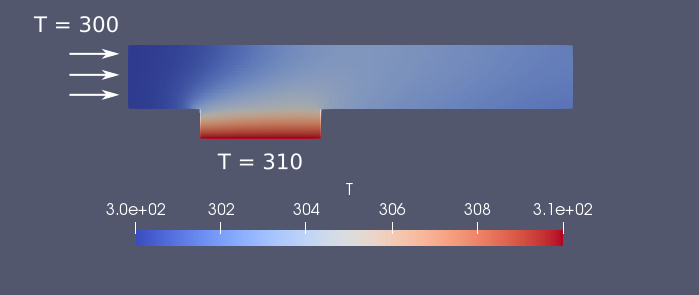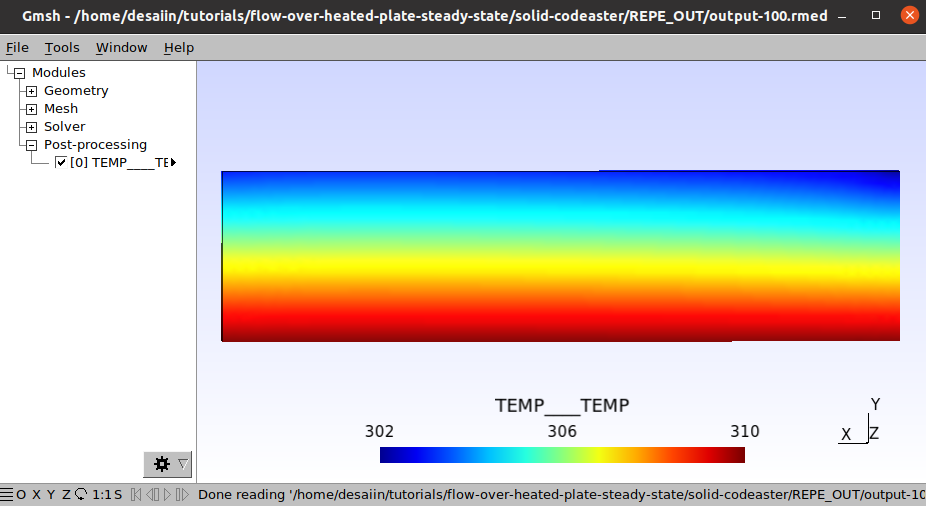Setup
The setup for this tutorial is similar to the flow over a heated plate using OpenFOAM. In this tutorial OpenFOAM is used as the solver for the fluid domain, and code_aster is the solver for the solid domain. A difference here is that we are using a steady-state OpenFOAM solver for demonstration purposes, therefore the results between the two tutorials are not comparable.
solver-interface in precice-config.xml, because the code_aster case is set up like this at the moment. Contributions here are particularly welcome!
Configuration
preCICE configuration (image generated using the precice-config-visualizer):

Available solvers
Fluid participant:
- OpenFOAM. We use buoyantSimpleFoam instead of the transient buoyantPimpleFoam. For more information, have a look at the OpenFOAM adapter documentation.
Solid participant:
- code_aster. The code_aster adapter documentation is oriented on this tutorial case. In particular the described configuration settings.
Running the Simulation
Open two separate terminals and start each participant by calling the respective run.sh script.
Post-processing
Firstly, enable the ParaViS view in Salome-Meca by selecting the icon in the top of the screen.
For visualizing the results of the fluid solver, go to File -> Open ParaView File and select the fluid-openfoam.foam file. If you’re asked to choose a reader, please select OpenFOAMReader and click Apply to visualize the result.
For visualizing the result of the solid solver, press again Open ParaView File and select the output-..rmed group. Again, click Apply to visualize the result. After setting the temperature scale for both domains to 300-310 K, the following result is given for timestep 200:

The .rmed file output from Code_Aster can be viewed using GMSH. The result is as follows:
